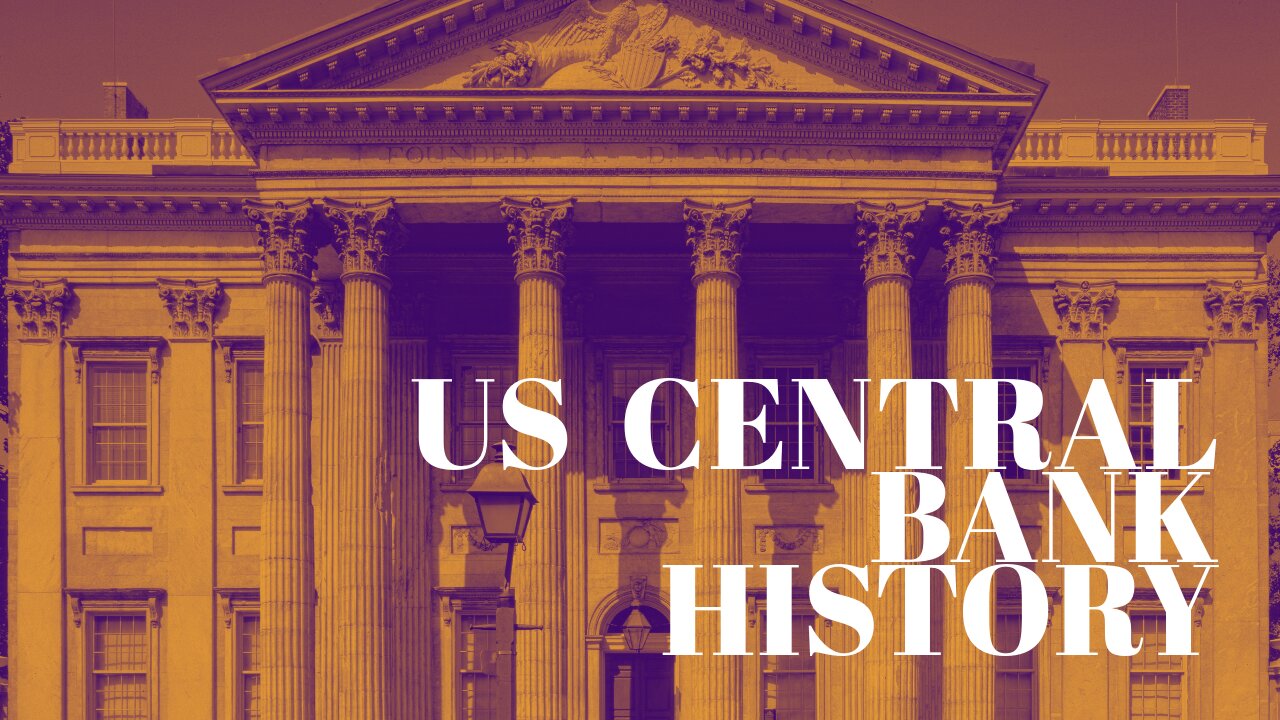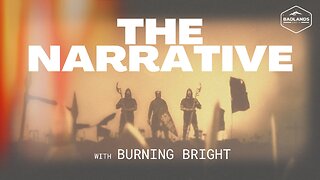Premium Only Content

From Hamilton to the Fed: The Fall and Rise of U.S. Central Banks
For the last century the U.S. Federal Reserve has held unprecedented power over the U.S. economy and banking sector. But the role of a U.S. central bank has been controversial.
The First Bank of the United States was established in 1791 under Alexander Hamilton, the first Secretary of the Treasury.
At the time, the United States was a young country still recovering from the Revolutionary War, and its government was heavily in debt. Hamilton believed that a central bank could help to stabilize the economy by regulating commercial banks and issuing paper currency.
He also believed that a central bank could help the government to finance its debts by buying government bonds. This would provide the government with the money it needed to pay its debts and to invest in infrastructure and other projects.
The bank was opposed by influential people including Thomas Jefferson and James Madison. Critics argued that the bank's existence was unconstitutional and concentrated too much power federally instead of developing state banks. They further worried that it would benefit wealthy businessmen in cities at the expense of ordinary Americans and farmers.
In 1811, Congress voted not to renew the First Bank's charter and the bank was closed.
Following the War of 1812, the Second Bank of the United States was chartered in 1816, again citing a need to address economic challenges. Its responsibilities included regulating state banks, stabilizing the currency, and managing national finances.
The bank came under fire early on for mismanagement. It failed to control the amount of paper money being issued by its branch banks in the West and South. This contributed to the speculative land boom that occurred after the war.
When the U.S. markets collapsed in the Panic of 1819 the bank continued to contract credit even as the economy began to recover. This policy made mass unemployment and falling property values worse.
The bank later oversaw more steady credit expansion under the leadership of Nicholas Biddle, and became a more powerful institution. But it faced opposition, notably from Andrew Jackson, who believed it had failed to produce a stable national currency, lacked constitutional legitimacy, subverted the rights of states and was “dangerous to the liberties of the people.”
The Bank War unfolded, culminating in Jackson's veto of the bank's rechartering in 1832.
The Free Banking Era ensued. During this time the country faced several economic crises, including in 1836, when Jackson attempted to fend off excesses in land speculation with the Specie Circular, which required payments for government land be made in gold or silver. That shocked state banks that had issued paper money without enough backing from the precious metals, and caused a contraction in credit and culminated in the panic of 1837.
During the free banking era states passed laws that allowed banks to operate with little regulation. This led to a proliferation of banks, some of which were poorly managed. Proponents of central banks say that this era suffered from not having a central bank to act as a lender of last resort during downturns and panics to stabilize the financial system.
Central bank critics counter that central planning of the economy and the manipulation of the money supply creates asset bubbles and inflation and exacerbates boom and bust cycles. The concentration of power among a few, unelected officials that can make decisions that impact the entire economy is also seen as undemocratic and bailing out banks that make bad investments creates moral hazard.
After the financial panic of 1907, efforts to create a central bank hastened again. This culminated in 1913 with the creation of the Federal Reserve System. The mandate of the Federal Reserve, with its twelve regional banks and Board of Governors, was to address financial panics, provide an elastic currency, and serve as a lender of last resort.
The Fed sets interest rates and managed the country's money supply. After the financial crisis of 2007-2009 it underwent bond purchases, which increases money supply in the economy and helps to expand credit. Supporters say this helped the economy rebound from the economic downturn, but critics charge that it has led to asset bubbles, contributed to inflation, reduced the value of the U.S. currency and made it more difficult for the economy to return to normal conditions without central bank support.
The Federal Reserve is also considering launching a digital currency, which if implemented could give it complete control over how U.S. citizens spend their money.
Photo Credits: FamZoo, Rob Lavinsky, iRocks.com, AgnosticPreachersKid, Myotus, Bestbudbrian @ wiki commons
Karolina Grabowska, Erik Scheel, Anna Nekrashevich @ pexels.com
Music credits: Trumpets in Your Ears by Wowa & Chris Rede, Good God by Wowa @unminus.com
-
 LIVE
LIVE
SpartakusLIVE
9 hours agoThe BADDEST Duo in WZ Exhibits PEAK Physique || Duos w/ Sophiesnazz to start, quads later
6,639 watching -
 2:49:37
2:49:37
RattlesnakeTV
20 hours ago $0.15 earnedLIVE DEBATE! Lord Jake vs Crazy Feminist
21.5K11 -
 4:00:42
4:00:42
Badlands Media
12 hours agoThe Narrative Ep. 35: Codex of Truth
87.9K42 -
 3:55:56
3:55:56
Due Dissidence
15 hours agoSchmuley TRASHES Shapiro, Maxwell Sings For Pardon, Uhuru Doc Preview - Live From St. Louis!
44.3K44 -
 LIVE
LIVE
Lofi Girl
2 years agolofi hip hop radio 📚 - beats to relax/study to
435 watching -
 2:23:21
2:23:21
PandaSub2000
5 days agoMadison VR (Part 4) | PSVR 2000 (Original Live Version)
23.7K2 -
 2:34:32
2:34:32
Badlands Media
5 days agoCODEX 9/11
303K261 -
 1:53:43
1:53:43
Nerdrotic
9 hours ago $0.32 earnedMysteries of 3I/ATLAS | Forbidden Frontier #113
58.4K5 -
 2:04:21
2:04:21
vivafrei
1 day agoEp. 278: D.C. Peace Wave! Big Tish & Nipple Judge SPANKED! "Maryland Man" Trafficker FREE & MORE?
115K136 -
 3:02:42
3:02:42
Damysus Gaming
5 hours agoBorderlands 3 - Part 8 - FL4K Time | Children of the Vault be Warned!
25.4K